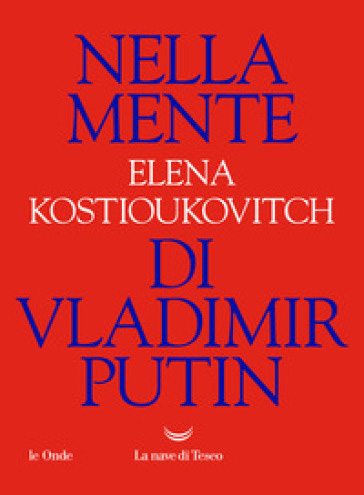The word “sagra” derives from the Latin sacrum: its early meaning in fact is that of a popular festival dedicated to the patron saint of the village or town. But the sagra can also be a celebration of a certain dish or product, of a vegetable or fruit, a wine, a type of preparation, even of a specific part of the beef or lamb. In this way tribute is paid to the specialties (roast chestnuts, strawberries, frog’s legs fried in batter) for which a particular village or city is renowned.
To mention a few at random... In the little town of Ribera (Agrigento) in April a lively Orange Sagra takes place (similar to the battle of the oranges at the Carnival of Ivrea): the participants cheerfully throw oranges at one another, race on the oranges, slip and fall, and even get hurt. A sagra in honor of gnocchi is held in June at Castel del Rio, near Bologna. In July, in Tropea, there’s the Sagra of the blue fish and red onion. In July, in Castelfiumanese, the Sagra of the apricots. In August, in Norcia, the famous lentils of Castelluccio are honored, and in Eboli, the local mozzarellas. In the village of Albanella in the province of Salerno, the Sagra of the pizza is organized in August. Sardinia, in August, celebrates the Sagra of the tomato (in Zeddiani, in the province of Oristano) and the Sagra of Vernaccia wine (in Nurachi, also in the province of Oristano). Many arrive dressed in traditional costumes. These are rowdy festivals, with music and dancing. In San Damiano D’Asti, in September, there’s the Sagra of boiled foods. In the fall, in Marradi, near Florence, the chestnut Sagra. Torrone (almond nougat) is the star of the November Sagra in Cremona and the December one in Faenza. The radicchio Sagra is the main event of the month of December in Treviso.
A national exhibit of “meditation wines” takes place in Mantua, in the Palazzo Ducale, on the last weekend of April, and on the second weekend of the same month the “Festival of lost flavors” is held in Zerbolo, near Pavia.
The Italian sagra is pagan in origin. Ancient Roman festivals celebrating food and eating practices were described both by Ovid, and by encyclopedist Ambrosio Teodosio Macrobio, who lived in the fifth century A.D. at the court of the emperor Honorius, and who characterizes them as “things of bygone days”. Even after the triumph of the Christian religion, high spirits have continued to flourish on those days, and participants feast pleasureably under the banners of interceding saints and martyrs. Thus in the village of Force (the Marches) the sagra dedicated to the cacciannanze, typical focaccias of bread dough baked in a wood-burning oven, is also called the “Feast of the blessed Maria Assunta Pallotta” [who was born in Force, tr.n.]. But these feasts do not have the odor of sanctity, to the point that zealous Catholics are often irritated by them and do not always take part in the event. Therefore the sagras are for the most part organized by informal, non-religious groups of individuals brought together by some “interest”: such as an association of fishermen or a committee for environmental protection, or a group of passionate history buffs who are active locally.
Such feasts may even become an arena for ideological protest, and then the saints’ statues on the tables are replaced by portraits of the founding fathers of political movements. One need only think of the feasts of Unity, initially conceived in accordance with their French counterpart, based on the example of the fête de l’Humanité that took place for the first time in the Parisian suburb of Bezons in September 1930. At the first Italian Unity feast, organized by partisan commander Willi Schiapparelli in Mariano Comense (Lombardy) in September 1945, no one had their sights set on exalting some gastronomic specialty. In truth, even if they had wanted to, such an objective would have been difficult to realize, given the desolation and poverty of the immediate post-war period. Essentially, there were no alimentary products of the kind available to the organizers. But the participants at the first Unity feast found a food that corresponded to the revolutionary communist coloring of the gathering: polenta, the workers’ food, accompanied by red wine. Red because, as was obvious to everyone (and still is), the color red had to predominate in the gastronomy of the militant proletariat… even if, truthfully, red does not predominate in that particular Italian dish.
Little by little the growing well-being of Italian society was also reflected in the menu of communist picnics. In the Sixties, in the period of the economic “miracle”, communist barbecues of grilled steak and pork sausage (salamelle) became popular, along with barbecues in city parks and sports fields, outdoors amid crowds and general enthusiasm.
Whatever the case, the sagras are trendy, open, light-hearted, democratic feasts.
In every gorge, in every piazza, on every hill… Italians celebrate the fruit of their labor. To cite a few more at random: the Black Bread Sagra (Champorcher, Valle d’Aosta), the Feast of Valpelline soup (Valle d’Aosta), the Sagra of chestnuts (Châtillon, Valle d’Aosta), of vin brûlé (Étroubles, Valle d’Aosta), of peaches (Canale, Piedmont), of hazel nuts (Cortemilia, Piedmont), of the white truffle of Alba (Alba, Piedmont), of honey (Arese, Lombardy), of frogs (Bornasco, Lombardy), of rabbits (Brembio, Lombardy), of asparagus (Cantello, Lombardy), of risotto (Villimpenta, Lombardy), of cherries (Bareggio, Lombardy), of milk (Truccazzano, Lombardy), of goose (Mortara, Lombardy), of pork (Motta Visconti, Lombardy), of whortleberries (Piazzatorre, Lombardy), of apples (Caldonazzo, Trentino), of olives (Pove del Grappa, Veneto), of asparagus (Bassano del Grappa, Veneto), of corn (Marano Vicentino, Veneto), of chicory (Crepadoro, Veneto), of strawberries (Faedis, Friuli), of crayfish (Remanzacco, Friuli), of olive oil (Moneglia, Liguria), of anchovies (Deiva Marina, Liguria), of focaccia (the Recco, Liguria), of grilled meat (Terzorio, Liguria), of snails (Borgio Verezzi, Liguria), of rosemary focaccia (Lavagna, Liguria), of chickpea flour flatbread (Maissana, Liguria), of chestnut flour flatbread (Rossiglione, Liguria), of porchetta (roast sucking pig) and tortellini (Lavezzola, Emilia Romagna), of cotechino (pork sausage) (Val Tidone, Emilia Romagna), of bruschetta (Predappio Alta, Emilia Romagna), of roots (Soncino, Lombardy), and on and on…
Little by little religious feasts (in the name of the local saint) and ideological feasts (in the name of the proletarian revolution) merged with the traditional pagan sagras, but a central place was reserved in any case for the local specialty or typical product. Today, in sports fields, parks and recreational areas, under the tents of the Unity feasts, families roast, prepare, eat and clean up together, just as they did in the past in churchyards and piazzas.
There is nothing, in fact, that brings people together like food. And if unity is ruptured at the level of higher politics, the fracture is also evident in gastronomic declarations. When in the Nineties the Communist Party split into the Democratic Party of the Left and the Communist Refoundation Party, Massimo D’Alema, then secretary of the Democratic Party, outlined the results of what had happened by resorting to the language of the “culinary code”, a language that comes naturally to Italian speakers, journalists and politicians. In fact, addressing those who intended to abandon the party in order to found another, he exclaimed: “With you… will go those who grilled the steaks at the Unity feasts”.1
But it did not end there. Political divergences found a place even within the Democrats of the Left themselves [DS or Democratici di Sinistra; tr.n.], a further evolution of the Democratic Party of the Left, and in February 1998, concluding their meeting in Florence, D’Alema attacked the sacredness of that which no one had dared challenge until then: the tortellini of Emilia. Tortellini were the chief specialty of the sagras of “red Emilia Romagna”! They were an icon of the partisan movement, a symbol of democracy, the banner of the revolutionary struggle!
In attacking Emilian tortellini, D’Alema, a Roman, had probably not predicted the severity of the blow when he stated point-blank (just before being elected to the office of President of the Council of Ministers!) that he did not intend to cry over “a Left made up of liberal militants, capable only of distributing flyers, putting up posters, and making tortellini” (Martini, “D’Alema: noi e l’Ulivo per governare” [D’Alema: We and the Olive party for government], in La Stampa).
Such skills, D’Alema declared, were not enough “to lead the nation”.
As it turns out, in all probability he was the one this declaration prevented from leading the nation.
The government of D’Alema lasted less time than expected (from October 27, 1998 to December 18, 1999), and one of the causes of its downfall was the lack of support on the part of the Emilian hard core, made up of former partisans and their supporters: voters from the central “tortellini” regions, who did not have much liking for him to begin with and who, after hearing speeches like that, definitively turned their backs on him. It would have been difficult to wound these voters more severely. And in fact the former Communist mayor of Bologna, Guido Fanti, hurled a fierce reply back to D’Alema: “If we hadn’t cooked the tortellini, you wouldn’t be there” (“Era buon governo efficiente” [It was good efficient government], in Il Foglio).
Indro Montanelli, immediately grasping the lapsus of the leader of the Left, indicated in an article that, by raising his hand against Emilian tortellini, D’Alema had attacked something sacred (Montanelli, “La cosa due e i tortellini” [The Cosa 2 operation and tortellini], in Corriere della Sera). But the DS leader stubbornly did not give up: “… there is a difference between a tortellino of government and a tortellino of the struggle” (“D’Alema e Montanelli, tortellini di lotta o di governo?” [D’Alema and Montanelli, tortellini of the struggle or of government?], in Corriere della Sera).
The Left was defeated a few months after the sacriligious statements about Emilian tortellini, and Bologna, a red stronghold for forty years, was also swept up in the fall. The new anti-Communist mayor of Bologna (the first of the post-war period), Giorgio Guazzaloca, a butcher, sausage-maker and veal cutler pounder, was advised by judicious individuals to publicly proclaim his devotion to tortellini (“La prevalenza del tortellino, Guazzaloca si annette il simbolo dell’identità bolognese” [The tortellino prevails, Guazzaloca appropriates the symbol of Bolognese identity”], in La Stampa).
Tortellini forever, as long as Italy reigns! When at the end of 2000 the no-globals organized pickets in front of McDonald’s (see THE LATER GIFTS FROM AMERICA) to coincide with the OCSE conference (Organization for Economic Cooperation and Development) in Bologna, tortellini were distributed gratis in front of the American fast food chain outlets (Rodotà, “La strategia delle brigate tortellino” [The strategy of the tortellini brigades], in La Stampa). It was an expression of class struggle, of revolutionary ardor, of popular pride. The bugle of battle sounded and the “tortellino of the struggle”, rejected by D’Alema, resumed its place in the ranks.
Like the various cultural activities that inevitably conclude with refreshments, local sagras in honor of a city’s patron saints, as well as Unity feasts, project a clear symbol of social reconciliation. Psychologists, sociologists, philosophers and writers (such as Elias Canetti) describe the condition of the reconciled mass, when conflict is extinguished, dissolved in the collective, and customary aggression does not develop. The common celebration of religious rites and, on a secondary level, the convivial banquet can have this effect on the mass. The crowd rejoices, forming an immense Rabelaisian collective body. The crowd is reconciled, eating an enormous communal meal: a roasted wild boar, a colossal fried fish, a gigantic frittata, a gargantuan polenta, a Cyclopean mountain of pasta. In many cases the sagra represents a collective religious celebration (in honor of the local saint), in others the common exaltation of political ideas (the Unity feasts, the no-global tortellini), but in all cases it culminates in the consumption of a ton of good food. As a result, sagras encompass a very strong, ennobling and reconciling force.
What’s more, sagras and political picnics disseminate the culinary culture. Thousands of people sample rare dishes, like donkey meat or frogs, only on the occasion of these feasts. In 1991, seventy tons of frog legs were eaten at the festival of the Communist Party of Bologna (“Italiani mangiatori di rane alle feste del partito” [Italians eat frogs at the party’s feast], in L’Unità).
English translation copyright © 2009 by Anne Milano Appel



